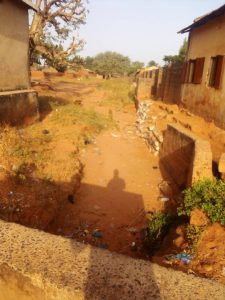
Despite warnings from the Nigerian Meteorological Agency (NiMet) and the Nigeria Hydrological Services Agency (NIHSA) about the impending floods, the Kebbi State government failed to take adequate measures to prevent or mitigate the impact of the disaster. This negligence resulted in widespread flooding, which caused significant loss of life, property, and livelihoods. SHEREEFDEEN AHMAD reports.
Six months after losing her husband, 35-year-old Rashida Muhammad faced another devastating blow. This time, it was not death, but a flood that destroyed her home, her tomato-selling business, her savings, and everything she had left in life.
The flood struck on Saturday, September 3, 2023, when an early morning downpour in Dakingari, a town in Suru Local Government Area (LGA) of Kebbi State, Northwestern Nigeria, turned into a raging torrent. The disaster swept away over 50 houses, damaged businesses worth millions of naira, and claimed the lives of three people, according to Alhaji Muhammad Lawal Suru, the chairman of the local government.
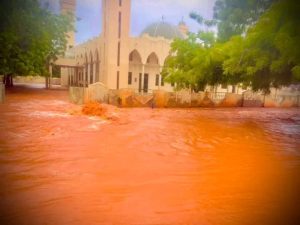
Rashida, a widow with four children, was among the many who lost everything.
“When the rain started, we rushed into our room,” she recalled. “But before we knew it, our compound was submerged, and the water broke through the door and flooded the room.”
With water surging all around her, Rashida feared for her own life and that of her children.
“I couldn’t save anything from the room because the water was rushing in too fast,” she said.

It was only with the help of neighbors who broke through the fence to rescue them that Rashida and her children escaped the floodwaters.
Sadly, flooding has become an annual disaster in Nigeria. In 2022, the country experienced its worst flooding in recent history, with virtually every state, including Kebbi, affected. The disaster claimed over 600 lives and displaced more than 1.3 million people. The total direct economic costs were estimated to be about N3 trillion, according to former Minister of Humanitarian Affairs, Disaster Management and Social Development, Sadiya Umar Farouq.
“The extreme northern states are predicted to have onset between June and July, with the northern fringes of Sokoto, Kebbi, Zamfara, Kano, Katsina, Jigawa, Yobe, and Borno states predicted to likely have onset between 20th June and 7th July of 2023,” Nigerian Meteorological Agency (NiMet) and the Nigeria Hydrological Services Agency (NIHSA) said in its 2023 seasonal climate outlook.
Despite these stark warnings, Kebbi State did not allocate any funds for flood and erosion mitigation in its first quarter 2023 budget implementation. This negligence was particularly alarming given that the state was among the ones severely affected by the 2022 floods and had also been predicted to experience heavy rainfall in 2023.
Though the Nigerian government blamed the flood incidents on heavy rainfall, media houses reported that the situation in the country is further aggravated by the release of excess water from the Lagdo dam in neighboring Cameroon’s northern region.
The government of Cameroon always releases water from the dam to reduce the pressure on it. It is almost an annual occurrence with severe implications on Nigeria, because of the absence of flood defense mechanisms like the Dasin Hausa Dam, which should have been built 40 years ago.
Meanwhile, residents of Dakingari blamed the September flood on lack of adequate drainage systems.
A tour around the town correlates the residents’ claim. The available gutters in Dakingari are constructed on one side of the roads, instead of on both sides. This system has left people living on the side without a gutter at the mercy of floods.
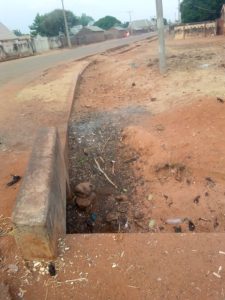
In fact, even the few gutters have built been taken over by sands and reduced to flat land, while the culverts remain in deplorable condition, making them incapable of surviving the acid of floodwaters.
Also, residents said some people have converted the gutters into dumping areas and stores for cow dung, which they use for farming.
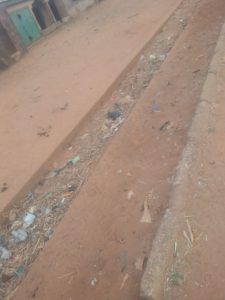
Following the NiMet prediction, the National Emergency Management Agency (NEMA) advised state governments to relocate residents of flood prone communities across Nigeria. Also, the agency said state governments must create awareness among people about the impending floods and begin to think of ways to manage the disaster.
Findings showed that the only approach the Kebbi State government took in response to the NiMet prediction of the early onset of rainfall was to conduct sensitization programs for citizens on ways to prevent probable flooding disasters. However, this approach has yielded little or no result, as communities continue to suffer the brunt of the floods.
“In fact, as far as I know, the government did not make any sensitization on floods this year in my town,” Abubakar Shamsudeen, a resident of Dakingari told this newspaper.
This reckless disregard of the state for the safety of its citizens has had dire consequences. Dakingari is not the only community that has fallen victim to the floods this year. In early September, another community, Zagga, a village in Bagudo LGA, was also inundated by floodwaters, resulting in significant loss of lives, properties, and businesses
Meanwhile, between 2021 and 2022, the Kebbi State government received a total of N1.2 billion as its share of the ecological fund, which is an intervention by the Federal Government to address the multifarious ecological challenges, including flooding, in various communities across the country. In January 2023, the state also received the sum of N64 million as its share of the ecological fund for this year.
Despite having ample resources, the state government failed to mitigate the impact of the flood, leading to immense suffering and undermining the resilience of affected communities in the face of future floods.
The attitude of the state raises more eyebrows when it appears among the twenty-seven states that shun the invitation of the panel set up by the Public Complaints Commission to probe the Ecological Funds.
Rashida’s double Jeopardy and the tragic fate of others
Rather than prevent the occurrence, what the state government has done in the aftermath of the disaster, is to throw money at the citizens. Kebbi State Governor Dr. Nasir Idris donated ₦40 million to the victims in Dakingari, instructing that each victim receive ₦500,000 as a temporary measure to cushion the effect of the devastating flood .
A glimmer of hope flickered for Rashida; she could finally take care of her pregnancy, her four children, and restart her tomato-selling business.
However, little did she know that the relief funds would become a source of further misery for her.
“I was supposed to receive ₦500,000,” she explained. “But a brother of my late husband hijacked the money, claiming that the destroyed house belongs to him, not my husband.”
“He only gave me ₦40,000 out of the N150,000 that was eventually paid. But I refused to collect it. I’m homeless now. I’m staying with one of my relatives in town,” she lamented.
Usman Abubakar, the chairman of the committee responsible for distributing the relief funds, explained that the allocation was based on the extent of damage suffered by each victim.
“Not everyone can receive ₦500,000,” he told this reporter. “We had to assess the amount of damage each victim sustained due to the flooding.”
While Rashida grappled with her unjust fate, other victims faced even more heartbreaking tragedies. Hussain Mande, a 32-year-old resident of Dakingari, set out for his farm on that fateful Saturday morning, hoping to bring home something to feed his wife and two children. Caught off guard by the intense downpour, Mande found himself struggling to navigate the surging floodwaters. His efforts proved futile, as he slipped into the deep water and was swept away. His lifeless body was later found after the floodwaters receded.
Maryam Ibrahim, another victim, narrowly escaped death but faced the devastating loss of her home, belongings, and her son’s hard-earned savings. The floodwaters surged through her house, destroying her son’s savings of ₦30,000 along with all her clothes, kitchen utensils, and other belongings.
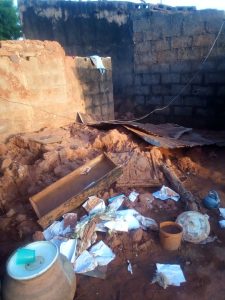
The bitter tales of Zagga residents
Similar to Dakingari, the village of Zagga in Bagudo LGA experienced its own share of devastation from the early September rainfall. The heavy downpour that began in the early morning hours turned into a relentless torrent, triggering a flood of unprecedented intensity.
Residents recounted the ferocity of the flood, describing water levels rising above four feet and inundating every street in the village, submerging buildings and tragically claiming the lives of three individuals.
Seven year old Hafsat was among the three victims of the flood. Her mother, Mo-inna Dodo, recounted the heartbreaking events that led to her daughter’s untimely demise.
“Hafsat was playing at our neighbor’s house when the rain started,” Mo-inna Dodo recalled. “Just minutes later, she decided to rush home, but as she reached the main entrance of our house, a fence, already weakened by the water, collapsed on her, causing her instant death.”
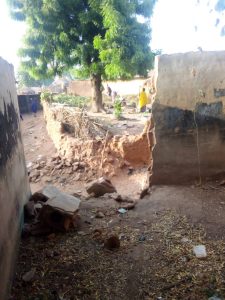
The devastating impact of the flood extended beyond the loss of life, causing extensive damage to Mo-inna Dodo’s home. “Most of the rooms in the house have also collapsed,” she lamented.
“I believe that the lack of a proper drainage system made it easier for the water to enter our house,” she said”
Although the government provided compensation for the flood victims, Mo-inna Dodo expressed the profound loss that no amount of money could ever replace.

“Although the government compensated us, no amount of compensation can bring back my daughter’s life,” she stated with a sad face, her words echoing the profound grief that gripped the community in the aftermath of the tragedy.
Devastating floods leave a trail of ruin, hunger in Zagga
As the rainy season approached, Garba Grige Zagga’s nights were haunted by worries about the condition of his house and the inadequate drainage system in his village. He recalled, “Due to the lack of gutters, water easily entered my compound during heavy rains.”
Determined to protect his home and family, the 60-year-old man embarked on a tireless quest to gather enough funds to elevate the fence to his house. He even resorted to selling some of his farm produce to make ends meet. With unwavering determination, he managed to purchase five bags of cement, hoping to gradually acquire more to start the construction work.

However, in September, a devastating flood swept through Zagga, mercilessly washing away Garba’s five bags of cement, his existing fence, six rooms, and five sacks of millet, his family’s primary food source. The flood’s destructive force left him and his wife sharing a single room, their lives reduced to a mere shadow of their former existence.
Garba’s voice echoed the plea of many residents, “We desperately need the government to construct proper drainage systems to regulate the flow of water and prevent erosion.”
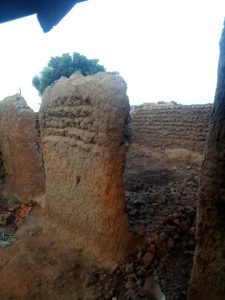
Muhammad Bello, another resident of Zagga, recounted the flood’s impact on his family, stating, “The flood has forced us to reduce our daily meals from two to one.”
The flood had ravaged his home, destroying his Islamic books, clothes and four rooms, along with his family’s stored millet.
Bello recalled the fateful day, “I was sitting outside with friends when the rain started around 9:30 am. The intensity of the downpour was overwhelming, and it quickly breached my house’s fence, flooding the compound.”
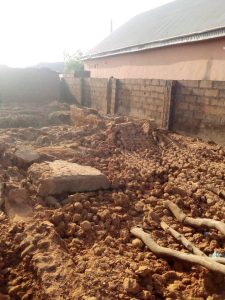
He emphasized the urgent need for effective drainage systems, adding that, “the lack of proper gutters is the root cause of this disaster. We urge the government to construct and expand existing gutters to effectively regulate water flow.”
A tour around the village corroborates Bello’s comments. There is a noticeable absence of a proper drainage system in the village. Residents had resorted to constructing makeshift drainages, but these proved inadequate against the force of heavy rains.
The available culverts, constructed by the state government, were ironically exacerbating the problem. Muhammad explained, “The water easily finds its way into homes from the culvert because there are no concrete passages or gutters attached to it.”

How Kebbi state can mitigate flood risk—Expert
Speaking on the situation, Emmanuel Kilaso, the founder of Securecycle Environmental and Climate Change Initiative, a non-governmental organization that promotes environmental sustainability, said it is crucial to address the underlying causes of flooding. He added that flooding mainly affects places within the floodplains of the major rivers and their tributaries are usually predicted by the Nigeria Meteorological Agency (NiMet).
He said since 2019 several LGAs in Kebbi state were under severe threats from flooding. The LGAs include Birnin Kebbi, Dandi, Kalgo, Koko/Bese, Suru, Aliero, Argungu, Augie, Bagudo, Bunza, Ngaski, and Shanga.
Furthermore, he said one significant factor is the network of tributaries that contribute to the swelling of the major rivers in the area.
“Rivers Sokoto, Gagare, Bunsuru, Maradi, Zamfara, and Kaduna all play a role in the increased water volume that overwhelms river channels and leads to flooding. Moreover, the release of water from dams in the area, such as Bakolori and Goronyo, further exacerbates the situation. As the water from these dams flows through River Rima, it adds to the already swollen volume, causing widespread flood during the wet season.
Research conducted by Abdullahi Muktar, an environmental scientist and Sadiq A.Yelwa, a professor of environmental geography at Usmanu Danfodiyo University, Sokoto has shed light on another critical factor: the location of settlements. They found that 12 settlements in Birnin Kebbi LGA are situated at a lower altitude (<207m) and in close proximity to river channels. This precarious positioning makes these settlements and their surrounding farmlands highly susceptible to flooding.
Mr. Kilaso said restoring river channels to a more natural route, to slow the flow of water, allowing rivers to reconnect to floodplains and upstream flood water storage would help in mitigating the menace of flood.
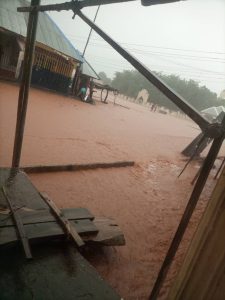
The proposed solutions are not exhaustive, but they represent a starting point for a comprehensive and sustainable approach to addressing the flood challenges faced by Kebbi State,” Mr. Kilaso emphasized. “When the government commits to implementing holistic solutions, both the people of Kebbi and the government itself will reap the rewards of proactive and positive actions.”
Government Reacts
In a recent interview with this newspaper, Manir Ibrahim, the Director of Environment for Kebbi State’s Ministry of Environment, addressed concerns regarding the state’s preparedness for flood mitigation.
Ibrahim said there was a budgetary allocation specifically designated for flood management, stating, “As far as I’m concerned, the ministry has a budget provision for floods.”
However, he declined to provide further details regarding the specific amount, allocation or the budget item where the funds are warehoused.
Meanwhile, a review of the state’s budget implementation reports for the first, second and third quarter of 2023, showed that there is no specific allocation for flooding and erosion control-related projects.
A check of the 2023 Kebbi state budget showed that the government paid more attention to the economic sector.
A total of N166,985,075,110 was approved for the year, out of which N60,465,905,016 was earmarked for recurrent expenditure, and N106,519,170,093 for capital expenditure.
N76,121,081,675.60 was allocated to the economic sector—this figure represented about 40% of the whole budget. The social sector which houses ministries like health and environment, got N54,586,339,469.70; while the administrative sector and the law and justice sector received N31,174,378,212.51 and N5,103,275,752.40 respectively.
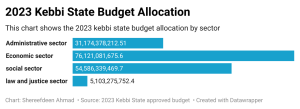
Meanwhile, N1,541,887,660.72 was approved for the Ministry of Environment, however, a careful perusal of the expenditure by economic classification in the budget clearly shows that no money was allocated for erosion and flood control for the year 2023.
Ibrahim emphasized the natural occurrence of floods and the importance of adopting both preventive and mitigative measures to minimize their impact.
He stated, “Flood is natural. We cannot avoid it; we can only minimize its impacts through preventive and mitigation measures.”
To address the issue of flooding, Ibrahim outlined the structural and non-structural measures implemented by the state government. Structural measures include the construction of dams and drainage systems, while non-structural measures encompass awareness campaigns and public education initiatives.
Ibrahim’s remarks highlight the government’s efforts to tackle the flood problem in Kebbi State. However, the lack of transparency regarding the specific allocation of flood mitigation funds and projects raises questions about the effectiveness of these measures.
